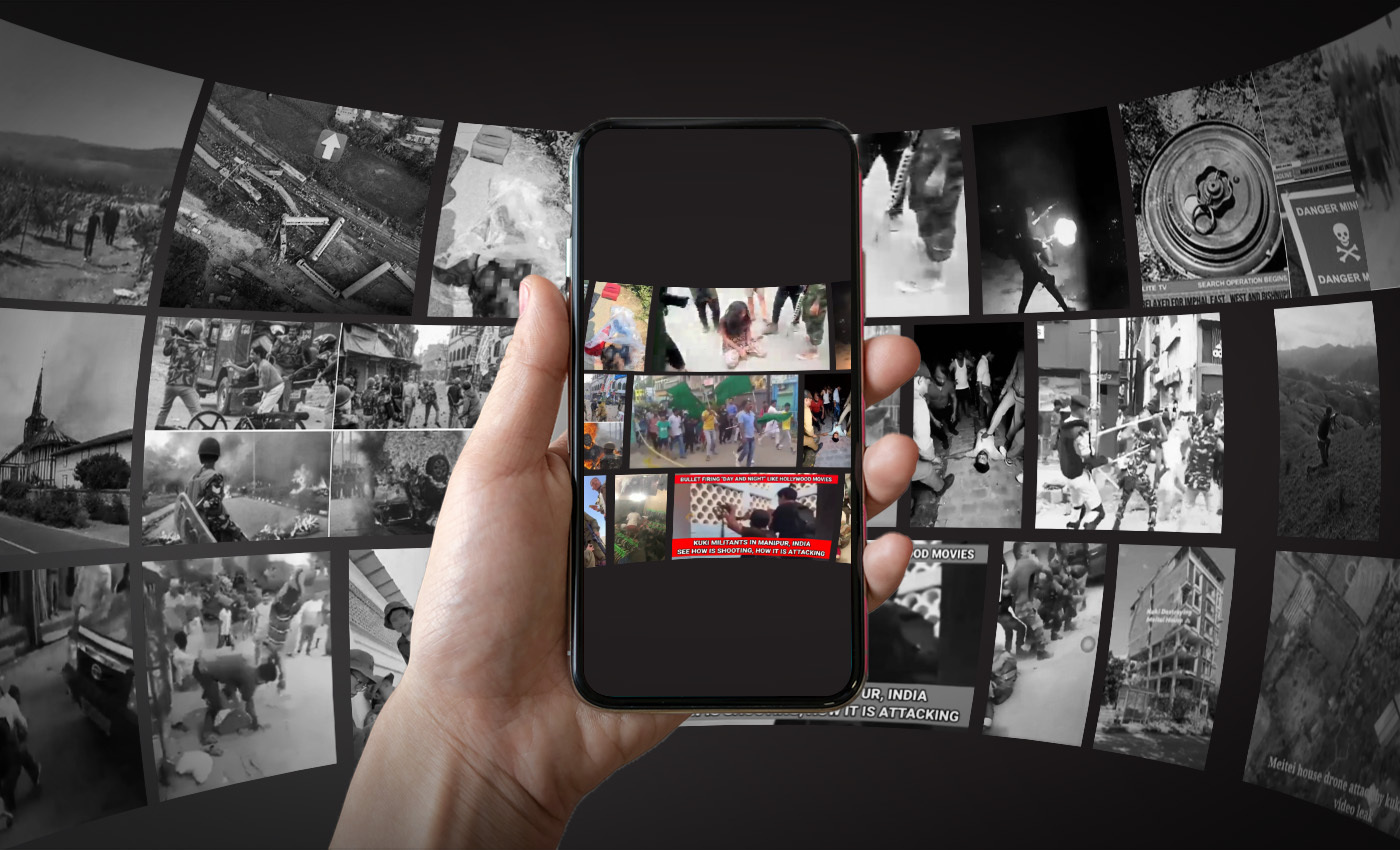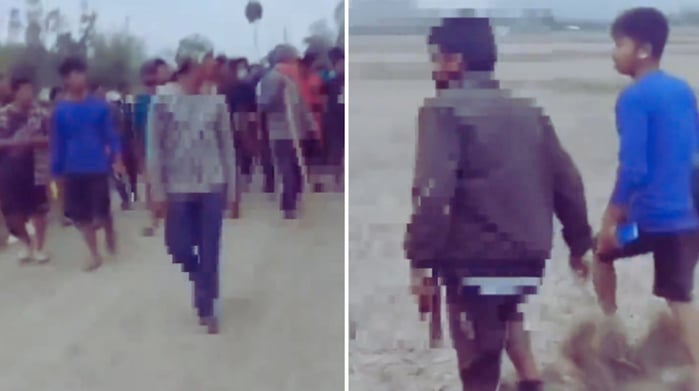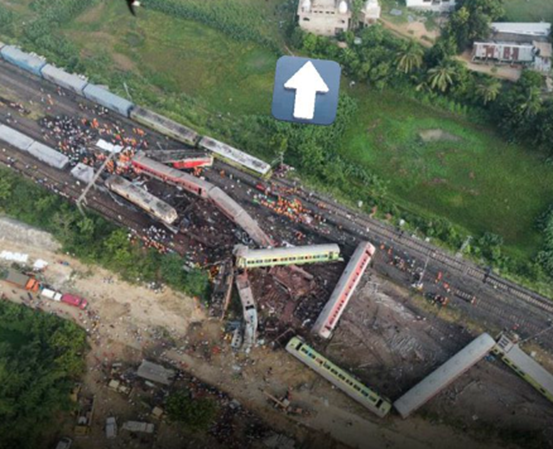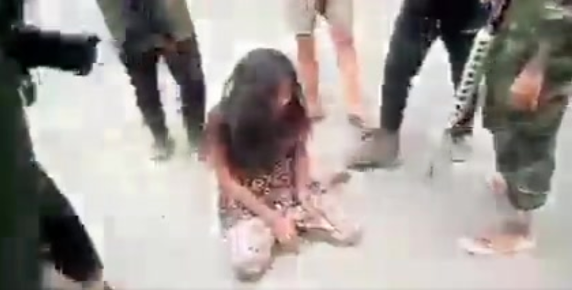By: anurag baruah
December 26 2023
When seeing isn't believing: Navigating visual misinformation in the age of AI

Representative image of how visuals are widely shared on social media. (Source: Logically Facts)
For centuries, humans have manipulated images, often for propaganda purposes. A notable example is Jacques-Louis David's painting of Napoleon Bonaparte gloriously crossing the Alps, which is actually an idealized depiction. In reality, Napoleon crossed the Alps on a mule, clad in a simple greatcoat, not the portrayed cape. Napoleon, recognizing the power of imagery, requested to be depicted on a fiery steed, thus reinforcing his image as a heroic figure.
The age-old adage “seeing is believing” aptly describes the psychological foundation of using visuals for propaganda or mis/disinformation. This becomes particularly perilous in today's era, where visuals can easily be manipulated with the help of artificial intelligence (AI).
But what's particularly concerning is the potent impact of visual mis/disinformation on social media. An incident in May in Manipur, India, illustrates this. Two women were subjected to sexual violence amid ethnic tensions between the Meitei and Kuki tribes. A viral image falsely claiming a Meitei nurse was raped and killed by Kuki men triggered this violence.
 A picture of the mob that allegedly assaulted the women in Manipur. (Source: X/Screenshot)
A picture of the mob that allegedly assaulted the women in Manipur. (Source: X/Screenshot)
That’s how big and serious the problem is.
Between April and October 2023, an analysis by Logically Facts revealed that most misinformation surrounding Indian news events was visual. Of 82 fact-checks conducted on events like the Manipur violence, Odisha train accident, Nuh violence, Ram Navami violence, and Karnataka Assembly elections, 73 involved the use of visuals to spread misinformation.
Lisa K. Fazio, a psychology professor at Vanderbilt University, explained that visual misinformation is especially damaging because images and videos capture our attention, exposing more people to it.
“When scrolling through social media, we're more likely to engage with a post with an image. Even if the visual misinformation isn't special, we'd expect it would have a greater effect on a user’s beliefs than text-based misinformation,” Fazio said. She added that scientific research also indicates that people are more likely to believe statements accompanied by images.
Visual persuasion
Psychological studies have found that images enhance belief in accompanying statements, especially on social media. A 2016 study showed that nonprobative photos, combined with misleading suggestions and repeated exposure, increase false beliefs.
This is because images and videos require less cognitive effort to process than text and, therefore, are trusted more, explains S. Shyam Sundar, founder of the Media Effects Research Laboratory at Penn State University. This can be especially problematic when these visuals are doctored, he added.
For instance, after a multi-train collision in Odisha in June, a photo of an ISKCON temple was misrepresented as a mosque on social media to propagate a conspiracy theory that targeted the Muslim community.
 The photo was used to claim that a temple near the accident site was a mosque. (Source: X/Screenshot)
The photo was used to claim that a temple near the accident site was a mosque. (Source: X/Screenshot)
Teresa Weikmann, a researcher at the University of Vienna, noted that visuals are considered more credible than text due to their rich media form and image indexicality, making them seem more real.
When we see a photograph, we can instantly relate to what it would look like in the real world. This happens very quickly and intuitively,” adds Weikmann, the author of the 2022 study “Visual disinformation in a digital age: A literature synthesis and research agenda.”
Perils of visual misinformation
The problem of visual misinformation extends further. In the case of the Manipur violence, 94 percent of the 35 debunked stories used visual misinformation. Photos and videos from Myanmar were falsely presented as events in Manipur. One such video, misattributed as depicting a “Kuki girl's assault and murder by Meites” in Manipur, actually originated in Myanmar.
 A screenshot of the viral video from Myanmar that was misrepresented as one from Manipur. (Source: X/Screenshot)
A screenshot of the viral video from Myanmar that was misrepresented as one from Manipur. (Source: X/Screenshot)
Pradip Phanjoubam, editor of Imphal Review of Arts and Politics, highlights the substantial impact of visual misinformation. He notes that visual media's shock value makes it a preferred tool for instigators of unrest. “(Even in Manipur) there was plenty of disinformation spread with vested interests to provoke extreme responses and fuel public paranoia,” he adds.
Our analysis showed a trend where videos are shared more widely than images, reinforcing their power in misinformation. Professor Sundar supports this point by explaining that videos, being a richer visual form, are trusted more than images or text as they require less translation in our brains.
This trust, however, is often misplaced, as people are less likely to scrutinize videos critically, he adds. “We fall for superficial cues, and there are plenty of them in a visual presentation compared to a textual one. In such an overloaded situation, our brains resort to shortcuts, called heuristics, to make judgments.”
In a 2021 study he co-authored with Maria D. Molina, Assistant Professor at Michigan State, it was found that 58 percent of users believed a fake news video on a messaging app to be accurate. This belief rate was higher compared to 48 percent for an audio version and only 33 percent for a text version of the same story.
Sundar further explained, “We identified a 'realism heuristic' in our research on fake news across different formats. This heuristic suggests that the more real something appears, the more likely it is to be believed. We also discovered that this realism heuristic leads to increased information sharing on online platforms like WhatsApp.”
How does AI change this?
The impact of AI in this realm is significant. The advent of generative AI technologies enables the rapid creation of fake content, making the distinction between real and fake more challenging. This development is evidenced by the emergence of deepfake videos involving Indian celebrities like Kajol and Rashmika Mandanna.
And while only some of the fabricated visuals out there are sophisticated, Weikmann warns against overlooking simpler misinformation forms, such as out-of-context photos and videos, which currently outpace more complex deepfakes in prevalence. She raises the concern that the public might begin to distrust all visual content, even authentic ones, amid the rise of AI-generated fakes.
Fazio agrees with this hypothesis, “I worry that people may overcorrect and not trust real images because they are so used to seeing either out-of-context or manipulated images and videos. Photos and videos have been taken as proof that an event happened, but that may be changing given current concerns around AI-generated images/video.”
Sundar adds that generative AI advancements have made it nearly impossible for the human eye to discern fake videos, even with close inspection.
Visual misinformation is constantly evolving. Experts highlight that generative AI further complicates the issue, potentially undermining trust in all visual media. It's essential for digital content consumers now to adopt a critical approach and recognize the influence of AI technology on our perception.
(Edited by Nitish Rampal)


